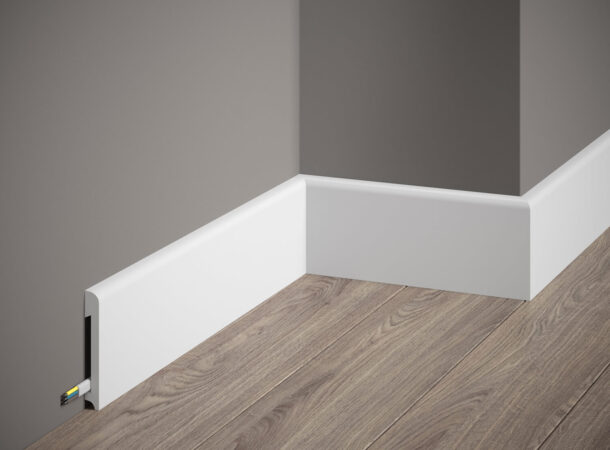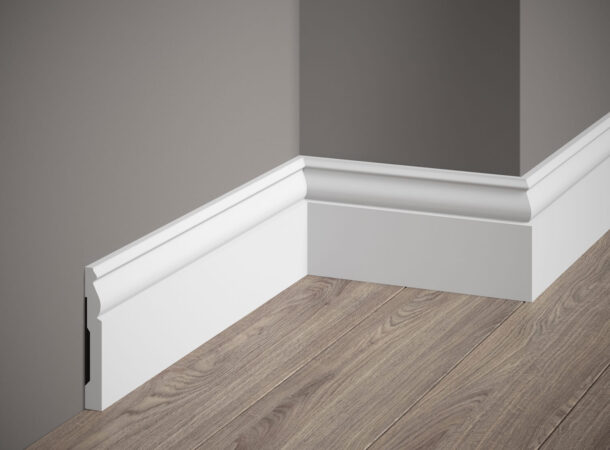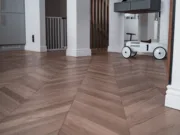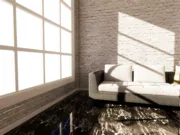How can I hide cables behind skirting boards?
Cables lying around can ruin even the most carefully designed interior. If you care about the aesthetics of the room and want to avoid clutter at the same time, it is worth using proven methods of hiding cables, such as skirting boards.
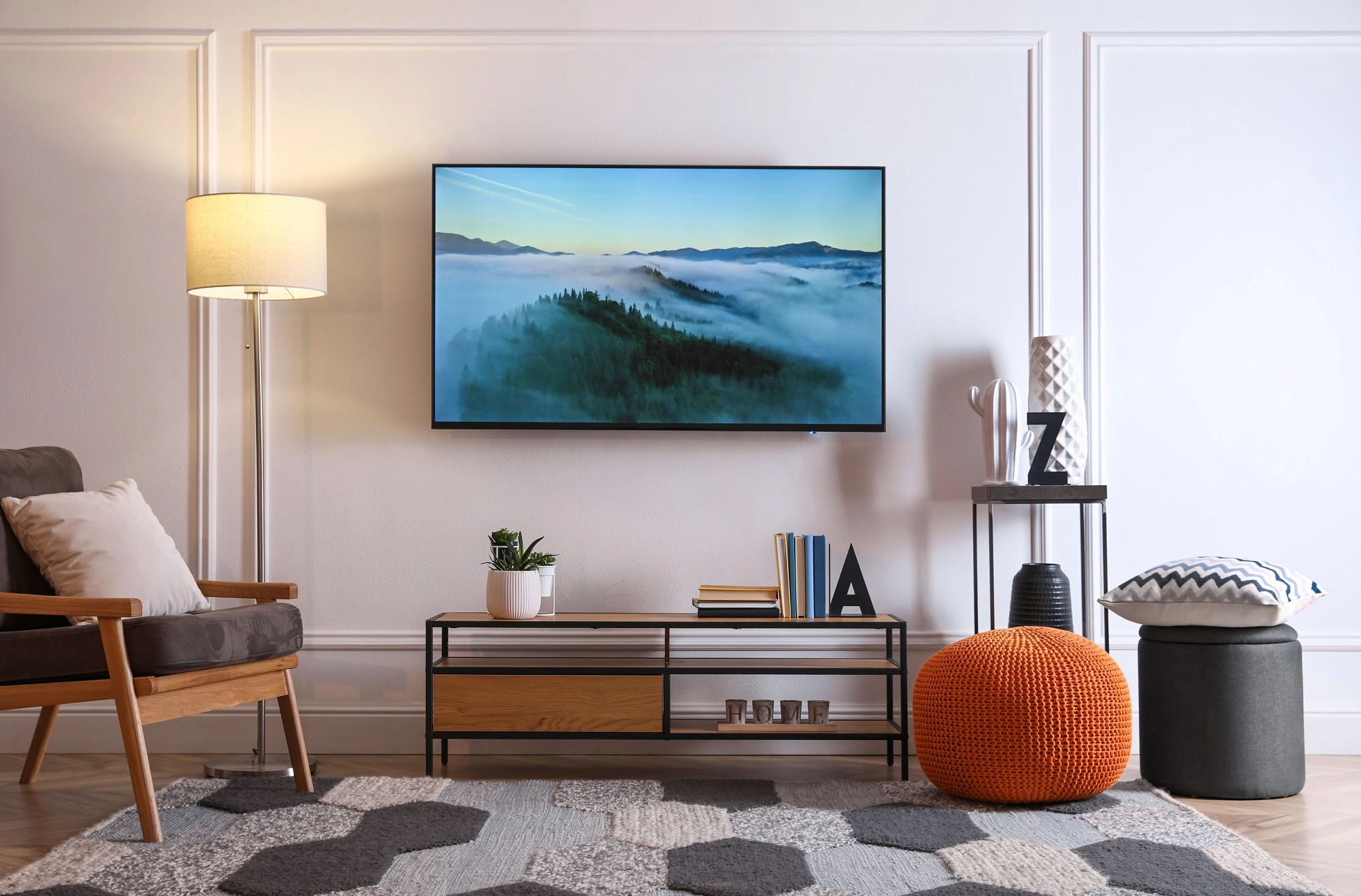
What will you learn from this article?
Why hide cables?
Visible cables can negatively affect the aesthetics of the interior, making the room look untidy and chaotic. Hiding cables is an easy way to give the interior a neat look without the need for complicated renovations, such as wall chiseling.
However, an aesthetically pleasing appearance is not the only reason to hide cables. Tangled cables can be dangerous, especially in homes with children or pets. Cables increase the risk of tripping and can damage equipment. Furthermore, unprotected power cables are more likely to be accidentally cut or damaged, which can result in a short circuit in the electrical system.
Thanks to well-chosen solutions, you can aesthetically hide cables and improve both the appearance of the room and the safety of the residents. The choice of the appropriate method should depend on the number of cables, the construction of the building and the preferred interior style.
Skirting boards as a way to hide cables
One of the most convenient and aesthetically pleasing ways to hide cables in your home is to use skirting boards with built-in cable channels. They allow you to mask cables without the need for renovation or wall chiseling.
Modern solutions, such as skirting boards made of PolyForce plastic, are durable and resistant to external conditions. Thanks to their 100% water resistance and high UV resistance, these profiles are the perfect choice for any interior, regardless of the level of humidity or sunlight. In addition, thanks to the appropriate profile and large amount of space, we can hide cables in them.
An additional advantage of modern skirting boards is the use of ScratchShield technology, which protects the surface from scratches and mechanical damage. This is particularly important in high-traffic areas such as corridors, living rooms and offices, where hidden cables can be exposed to accidental cuts or abrasions.
For those looking for even more advanced solutions, LightGuard technology offers an innovative approach to LED lighting installation. Thanks to the special structure of the material, light does not penetrate through the surface of the profile, eliminating the need for additional insulation layers such as aluminum tape. It is a perfect solution that not only allows you to aesthetically hide the cables, but also to create modern interior lighting, giving it a unique character.
Skirting boards and wall mouldings are a practical solution for those who want to combine interior aesthetics with functionality, while providing durability and protection for hidden cables. The ability to paint the profiles in any color makes it easy to match them to any interior design, creating a coherent and elegant look.
Skirting boards
How to hide cables behind skirting boards?
Installing profiles with cable ducts does not require any special tools and can be done by yourself, while maintaining full control over the aesthetics of the interior. The whole process should consist of several stages:
Preparation: selecting profiles and assessing the number of cables
Before starting the installation, you should determine exactly how many cables you want to hide, as the choice of the right method depends on the number of cables and their thickness. Then choose skirting boards – ones that have enough space and a profile that allows you to hide your cables in them.
The next step is to plan the cable route – check where the cables will run and if there are any electrical sockets nearby, which will help you avoid problems during installation.
Installation of skirting boards
Before installing skirting boards, make sure that the wall and floor surfaces are clean, dry and smooth so that the adhesive adheres properly. The profiles are installed using a special adhesive that ensures a durable and aesthetic connection without the need for drilling. Apply the adhesive evenly to the back of the profile and press it firmly against the wall, making sure it fits perfectly around the corner elements and edges of the room.
If the walls are very uneven or have a rounded shape, it is worth considering flexible skirting boards – such as Flex Mardom Decor. This type of profile is made of a special polyurethane material, Flex, which adapts the material of the profile to the bonding surface.
After gluing, it is advisable to wait for the recommended drying time so that the profile is stable and adheres well to the surface. In the case of profiles that need to be painted, it is best to do so after the end profiles have been installed to achieve a uniform and elegant effect.
Laying and protecting cables
After installing the skirting boards, you can start laying cables inside them. Place the cables in the cable ducts, making sure they are not excessively compressed, so that they are easily accessible if necessary. If there are several cables in a profile, it is advisable to secure them against movement using special holders or fixing tape.

Alternative methods of cable masking
Although skirting boards are one of the most convenient solutions for hiding cables, they are not always the only option. Depending on the layout of the room and the materials available, other methods of concealing cables can also be used that do not require chiseling the walls.
Wall-mounted cable covers
Where skirting boards cannot be used, wall-mounted installation covers are a good alternative. Made of plastic, they are available in different colors and can be painted to match the wall color. Cable covers are often used in offices where cables leading to desks and computer equipment need to be hidden.
Using stucco to hide cables
For those looking for a more decorative solution, stucco can be a great choice. Cornice mouldings and wall mouldings can act as cable ducts, effectively hiding hanging cables from lighting or sound systems. This is a solution that is ideal for classic and elegant interiors.
Using furniture to mask cables
If you don’t want to install additional elements, it might be a good idea to hide the cables behind furniture. TV cabinets, desks or shelves allow you to effectively mask cables without the need for additional profiles. It is worth choosing furniture with built-in holes for cables, which make it easier to organize them.
Installing cables under carpets
If cables are running across open spaces, you can consider hiding them under carpets. To protect power cables from damage, you can use flat cable covers that protect the cables and prevent tripping.
Laying cables in corner elements and on ceilings
In rooms where it is not possible to hide cables under the floor, wall mouldings or special channels along wall and ceiling corner elements can be used. This is a common practice when routing cables for audio systems or LED lighting.
Each of these methods allows for the aesthetic concealment of cables, adjusting the solution to the style of the interior, the number of wires and the design elements. The choice of the appropriate method depends on individual needs and the available solutions in the room.
How to hide cables behind skirting boards? Summary
Hiding cables neatly and safely helps to keep the interior tidy and increases the level of comfort. Skirting boards with cable ducts are a practical solution that allows you to effectively mask cables. Thanks to modern technologies such as ScratchShield or LightGuard, these profiles are durable, resistant to damage and allow for the installation of LED lighting without the light breakthrough effect.
Well-chosen cover profiles not only mask cables, but also protect the wires from damage. They are easy to install and can be done by yourself using a dedicated adhesive. For those looking for alternatives, there are also other ways to mask cables, such as installation covers, stucco, or the use of furniture.
The choice of the right method should depend on individual needs, the number of cables and the nature of the interior. Thanks to these solutions, it is easy to hide cables aesthetically, creating an orderly and harmonious space.

